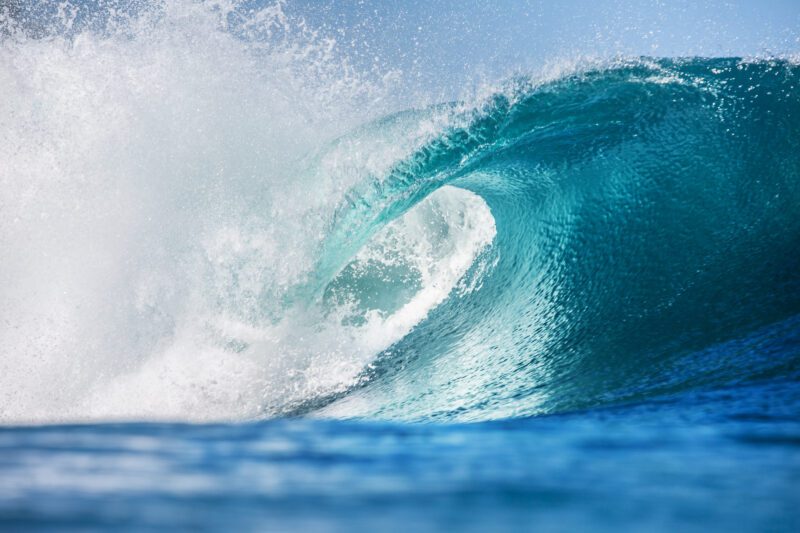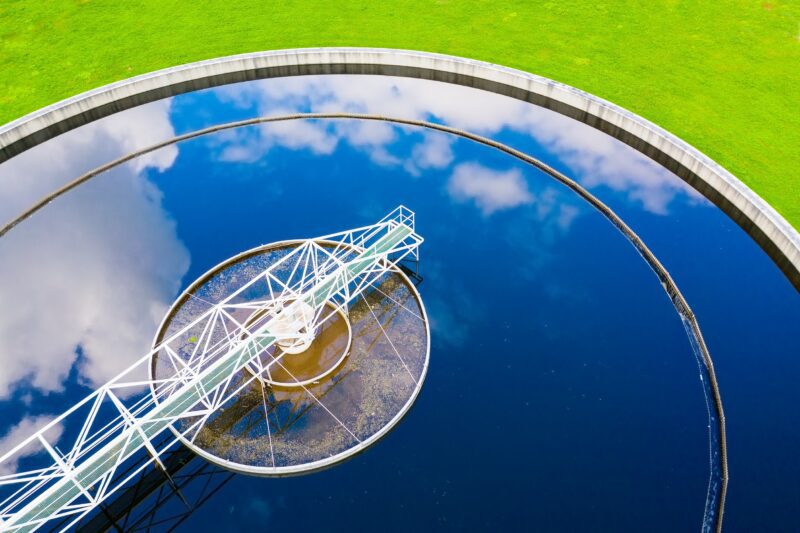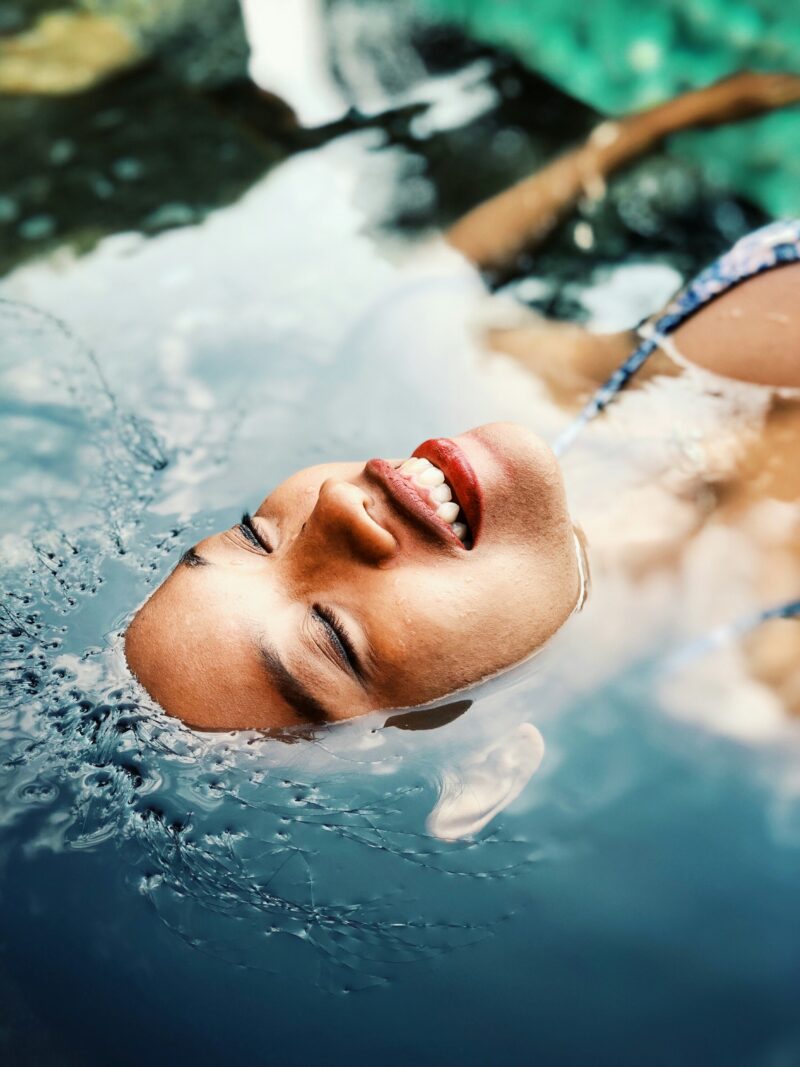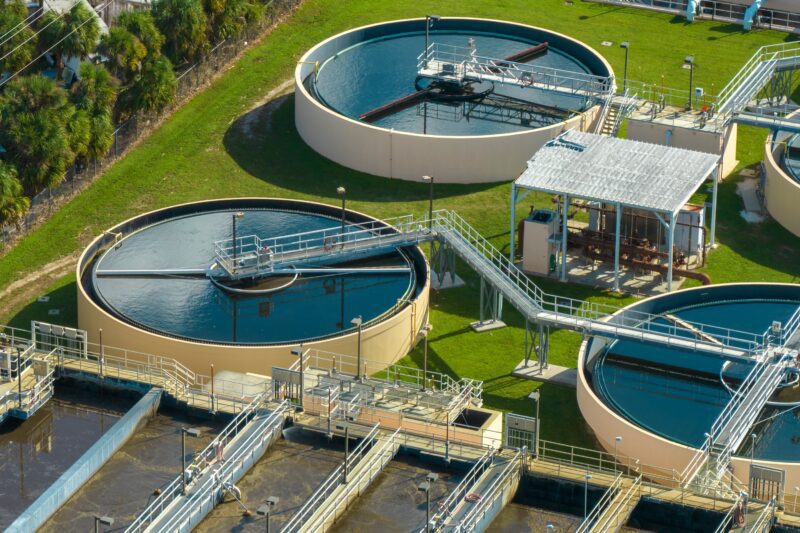The issue of global water scarcity has shifted from a looming concern to an urgent, present-day crisis. Climate change, population growth and unsustainable practices have led to dwindling supplies that threaten food production, clean drinking water access and biodiversity. In fact, according to UNICEF, some 700 million people could be displaced by intense water scarcity by 2030 [1]. This evolving issue highlights the need for urgent action across all sectors, particularly those industries that rely heavily on water, such as personal care, textiles, food production and paint.

The factors driving Industry Change
Industrial facilities are major consumers of water, using it for cooling, washing, energy generation and sanitation. On top of ethical considerations, the pressure for companies to implement sustainable practices is compounded by a rapidly shifting regulatory landscape. Governments around the world are introducing stricter rules to address water use, such as the European Union’s (EU) Water Reuse Regulation (WRR), enacted in July 2023 [2]. This regulation promotes circular water management by encouraging industries to recycle and reuse water more efficiently [3]. Similarly, the UK’s Water Framework Directive represents a strong push toward reducing industrial pollution and prioritising environmental stewardship [4].
Consumer expectations are also changing in parallel with these regulatory developments. Today’s shoppers increasingly demand transparency and accountability from brands. Eco-labels, certifications and sustainable production narratives are no longer optional; they influence purchasing decisions. Brands must therefore adopt innovative water-saving strategies to remain competitive and meet these evolving expectations.
Fortunately, technologies are advancing to optimise water reuse and recycling, including:
- Membrane filtration systems which effectively remove dissolved solids, contaminants and impurities.
- Biological treatment processes that use microorganisms to break down organic matter and remove contaminants.
- Advanced Oxidation Processes (AOPs) that employ powerful oxidising agents to degrade organic compounds and eliminate persistent contaminants.
- Zero Liquid Discharge (ZLD) systems that combine various technologies, such as evaporation and crystallisation, to produce high-quality water.
L’Oréal demonstrated innovative water recycling in its Warsaw facility [5], a region increasingly affected by drought. Recognised in 2021 with the Global Water Award, the company has worked to halve its water consumption while repurposing approximately 75,000 cubic meters of water. This success showcased the viability of water reuse in manufacturing operations and paves the way for more industrial water reuse projects.
Reducing industrial water is not just important for conserving resources, but also vital to mitigate the consequences of untreated wastewater. Untreated waste streams can carry contaminants that harm humans, wildlife and aquatic ecosystems; the World Health Organisation has reported that nearly a third of the global population already consumes water in poor conditions [6].
As well as providing water security, supporting environmental compliance and aligning with corporate sustainability goals, improving efficiency of water use, by its very nature, can create more cost-effective processes. Therefore, riding this wave of change offers a path towards operational success while securing vital water resources for future generations.
Tapping into innovation for greener chemistry
Green chemistry refers to creative strategies that reduce waste, conserve energy and replace hazardous substances with safer alternatives. Innovation is therefore at the heart of sustainable water use.
The first green chemistry principle states that it is better to prevent waste than to treat or clean up waste after it has been created [7]. Industries, governments and end users are demonstrating this principle through advances in formulations, processes and buyer trends that look to limit water use.

Personal care: The rise of waterless formulations
The personal care industry is already subject to various restrictions around cosmetic ingredients that limit environmental impact. These are constantly reviewed in the EU by the Scientific Committee on Consumer Safety (SCCS). For example, cyclic volatile methyl siloxanes (cVMS) have raised environmental concerns because of their persistence and bioaccumulative properties. In light of these concerns, the EU extended restrictions on substances like D4, D5 and D6 in rinse-off cosmetic products [8].
Despite efforts to improve the quality of wastewater, water is still often the first ingredient listed on personal care product labels, making its reduction an attractive and impactful solution [9]. Waterless formulations, such as solid shampoos, are emerging as a game-changer in this sector, due to their many environmental benefits [10]:
- Waterless and tableted formulations can often be packaged using recyclable materials, such as paper or cardboard.
- Solid formulations tend to be more concentrated, so require less packaging and support a reduced transport-related carbon footprint.
- Multi-functional solid formulations limit the need for multiple products.
- These formulations often have longer shelf lives and require fewer preservatives.
Another innovation within personal care is SILAB’s SILAFILM®, a groundbreaking technology for diffusing active ingredients into the skin. SILAFILM consists of a natural, biodegradable dry film, concentrated with ingredients activated by water [11].
Upcycled materials are also emerging as a major trend within the industry, allowing brands to reduce resource dependency, manage waste and tell a compelling sustainability story. However, challenges remain, from ingredient variability to stringent regulatory requirements, that can complicate the path forward. For one, water is a critical consideration when processing recycled materials as many require washing and purification to ensure they meet cosmetic-grade standards. This can lead to high water use, contradicting sustainability goals.
To mitigate these issues, some brands are exploring green chemistry techniques that use less water, like supercritical CO2 extraction, which uses pressurised carbon dioxide as a solvent [12]. While these methods can reduce the environmental footprint of upcycled ingredients, they often require significant upfront investment which may limit accessibility for smaller brands.

Textiles: Leading the way in sustainable dyeing
The textile industry is a major contributor to both water pollution and consumption. Producing a single cotton t-shirt requires an estimated 2,700 litres of water, sufficient to meet one person’s drinking needs for 2.5 years [13]. To tackle the impact on the environment, the EU wants to reduce textile waste and increase the life cycle and recycling of textiles. This is part of the plan to achieve a circular economy by 2050.
In 2020, textile production was responsible for 20% of global clean water pollution, with dyeing and finishing processes being key contributors. As a result, sustainable dyeing processes are being developed that can reduce water consumption up to 96%. These approaches are not only fast and easy to implement, but crucially require no water for soaping and rinsing, while also outperforming older methods.
End user habits have also changed significantly over decades, with the rise of fast fashion encouraging an increase in consumption. Of these items, less than half of used clothes are collected for reuse or recycling, and only 1% of used clothes are recycled into new clothes. New strategies to tackle this issue include steering consumer behaviour towards more sustainable options, such as clothing rental, or encouraging the purchasing of better-quality clothing.
As part of the circular economy action plan, the European Commission proposed a strategy to tackle fast fashion and stimulate innovation within the sector. The strategy included new eco-design requirements for textiles, a Digital Product Passport, and calls companies to minimise their carbon and environmental footprints [14].

Food production: Reducing waste in agriculture and processing
Water is vital in the food and beverage industry, used both as an ingredient and for manufacturing and cleaning processes. Surprisingly, 69% of daily water consumption comes from the production of food, equating to 3.5 litres per person, per day [15].
As such, dietary choices can significantly impact water consumption. Organic farming, for example, uses less water through improved soil health, better water infiltration and reduced dependence on chemical fertilisers. Furthermore, shopping locally reduces transportation-related water use, and plant-based diets use up to 55% less water compared to omnivorous diets [16].
The popularity of plant-based diets is growing, but there are still barriers to its uptake, from nutrition to taste. Supplementation may therefore be required to enhance nutritional value and flavour profile. Creavitalis® and Creapure® are creatine monohydrates from Alzchem Group and are excellent supplementary sources of creatine for the body: a compound in protein-rich foods that helps supply energy to muscles [17]. Food-grade versions of vitamin B3, which supports nervous system function, are also available for manufacturers and have become popular to create functional foods and nutraceuticals.
When adding ingredients such as vitamin B3 or creatine, it may be necessary for developers to consider the use of a flavour-modifying ingredient like trehalose to mask unwanted tastes. TREHA®, produced by Nagase Viita, is a high purity trehalose – a versatile disaccharide used to preserve freshness, enhance flavour and improve texture in the food and beverage industry.
Other popular flavour modifiers include naturally derived vanilla, peppermint and lemon. When sourced sustainably and ethically, natural flavourings can help producers showcase their dedication to using naturally derived products. Nielsen-Massey, one of the first companies to introduce an organic and fairtrade vanilla from Madagascar, have demonstrated their commitment to programmes that promote environmental practices, while also producing the finest quality products [18].
By finding ways to create tasty, nutritional plant-based products, functional ingredients can provide solutions for foods that reduce environmental impact and save water.
Paint and coatings: Innovations in recycling
The paint industry is another high water consumer, with paint manufacturing processes generating large quantities of wastewater [19]. Paint recycling is therefore emerging as a critical method to reduce waste and improve water use efficiency. In this context, recycling efforts are focused on reclaiming leftover paint or developing closed-loop systems that minimise wastewater generation during production.
Furthermore, some companies are adopting in-house mixing strategies, allowing them to reduce the number of products in storage. This not only minimises waste but streamlines manufacturing processes, improving operational efficiency.

Turning the tide on wastewater
The water crisis is no longer a distant threat—it’s a pressing reality that demands bold, collective action. From waterless formulations to advanced textile dyeing methods, industries are stepping up and proving that sustainability and profitability can go hand in hand.
By embracing green chemistry, adopting efficient water reuse technologies and aligning with evolving regulations and consumer expectations, industries are not only securing their own operations but also contributing to global water security. The shift toward sustainable water use is a shared responsibility and one that offers both environmental protection and long-term business resilience.
Through innovation, collaboration and commitment, industries are making waves towards a greener, water-secure future, demonstrating that sustainable practices are not just necessary but transformative.
References
[1] UNICEF (2020). Water Scarcity. [online] UNICEF.
[2] Emerson Taqi, J. & Gu, C. (2023) A new era of water reuse and reclamation: opportunities and challenges. White & Case.
[3] Wise Fresh Water (2024) Water reuse. [online] European Union.
[4] Planning Inspectorate (2024). Nationally Significant Infrastructure Projects: Advice on the Water Framework Directive. [online] GOV.UK.
[5] Global Water Awards. (2022). 2021 Industrial Project of the Year. [online]
[6] Parry, D. (2024). The Complete Guide to Wastewater Treatment and Reuse in 2024. [online] Veolia.
[7] Anastas, P. and Warner, J. (1998). 12 Principles of Green Chemistry. [online] American Chemical Society.
[8] Rolo, B. (2024). New EU cosmetic restrictions on Cyclic Volatile Methyl Siloxanes (cVMS) [online] CRITICAL CATALYST.
[9] Ledesma, A. (2021). Water in cosmetics: a dive into water-free beauty. [online] NATRUE.
[10] Stephenson. (2024). Rethinking water: How the personal care industry is leading the charge in waterless innovation. [online]
[11] Silab.fr. (2024). SILAFILM® [online] SILAB.
[12] Zorić, M., Banožić, M., Aladić, K., Vladimir-Knežević, S. and Jokić, S. (2022). Supercritical CO2 extracts in cosmetic industry: Current status and future perspectives. Sustainable Chemistry and Pharmacy, 27, p.100688.
[13] European Parliament (2024). The Impact of Textile Production and Waste on the Environment (infographics). [online] European Parliament.
[14] European Commission (2020). Circular Economy Action Plan. [online] environment.ec.europa.eu.
[15] Water Footprint Network. (n.d.). What is water footprint assessment? [online] Water Footprint Network.
[16] Bingham, L. (2020) 6 Tips to Reduce the Water Footprint of Your Food. [online]
[17] Smith, S. (2024) Unlocking Flavour. [online] Cornelius.
[18] Nielsen-Massey Vanillas. (2019). Sustainability and corporate responsibility [online] Nielsen-Massey Vanillas.
[19] Nair K, S., Manu, B. and Azhoni, A. (2021). Sustainable treatment of paint industry wastewater: Current techniques and challenges. Journal of Environmental Management, [online] 296, p.113105.